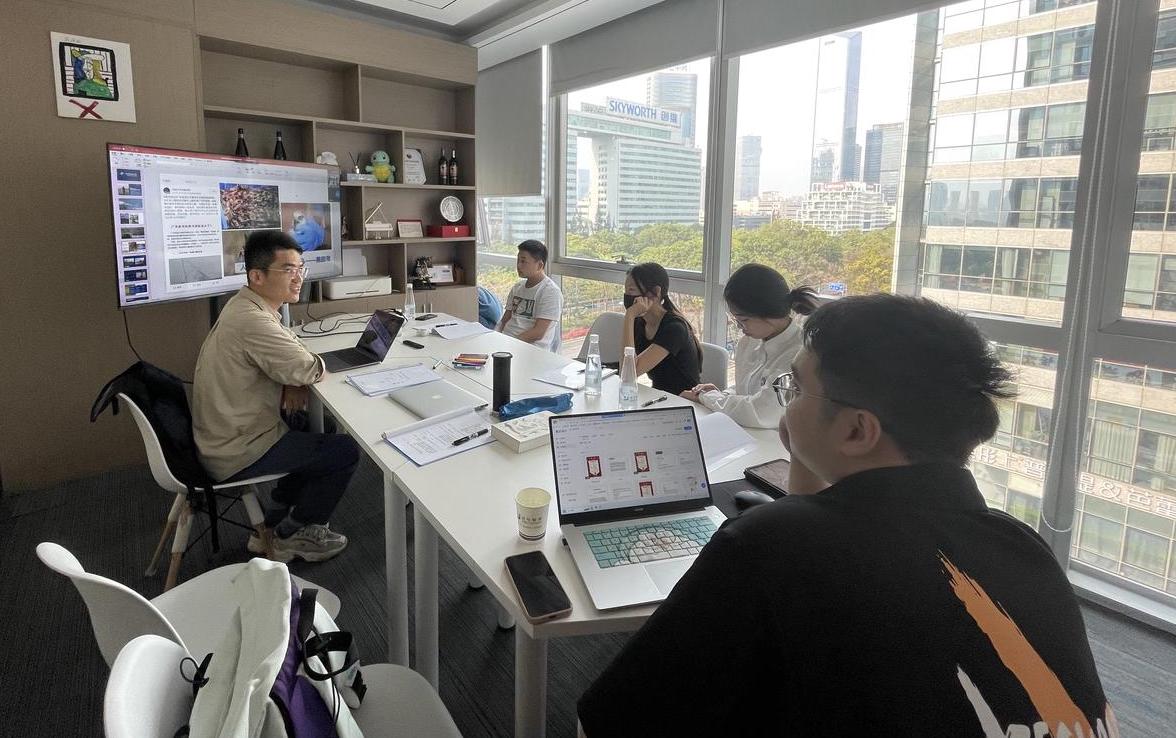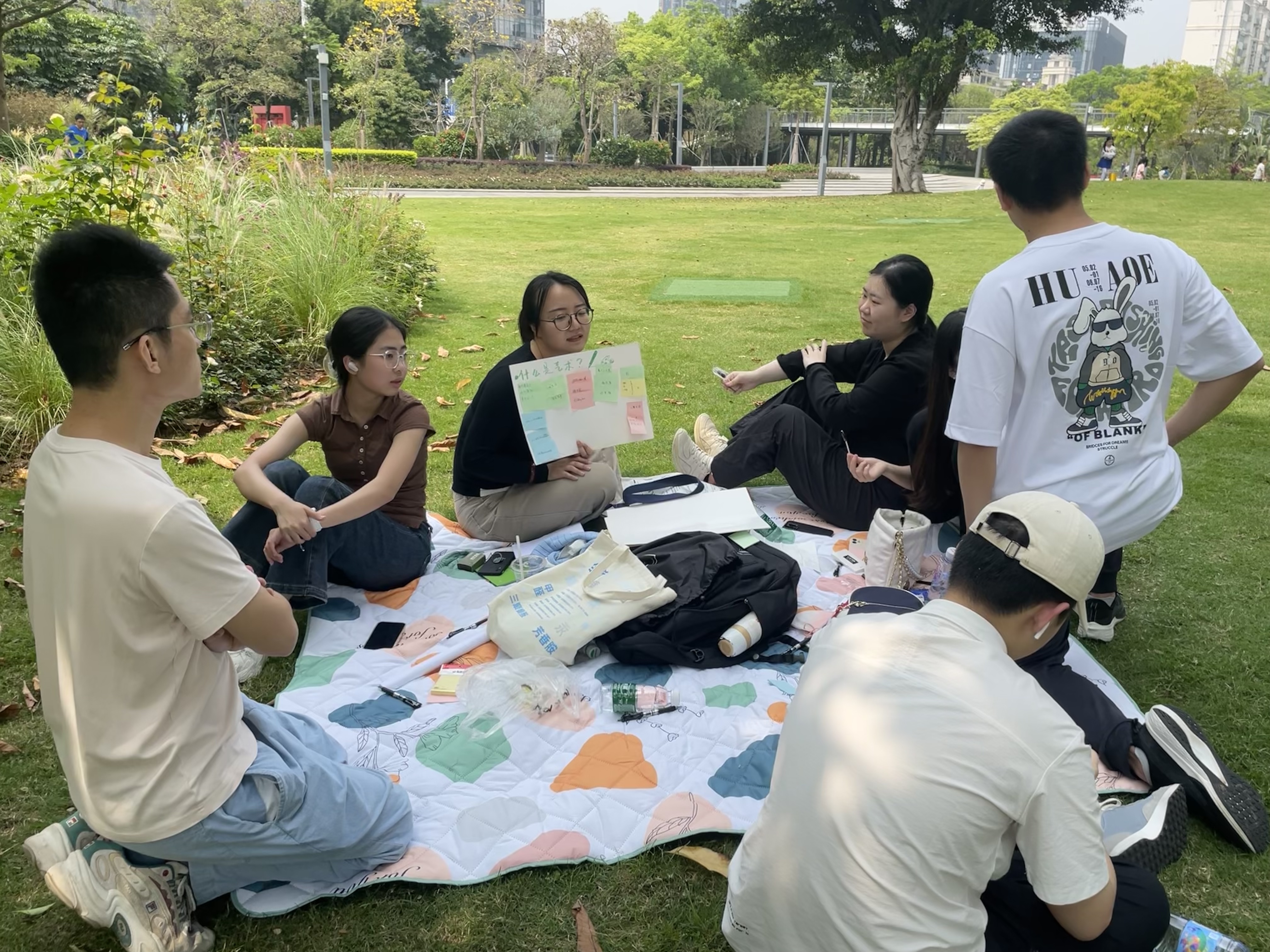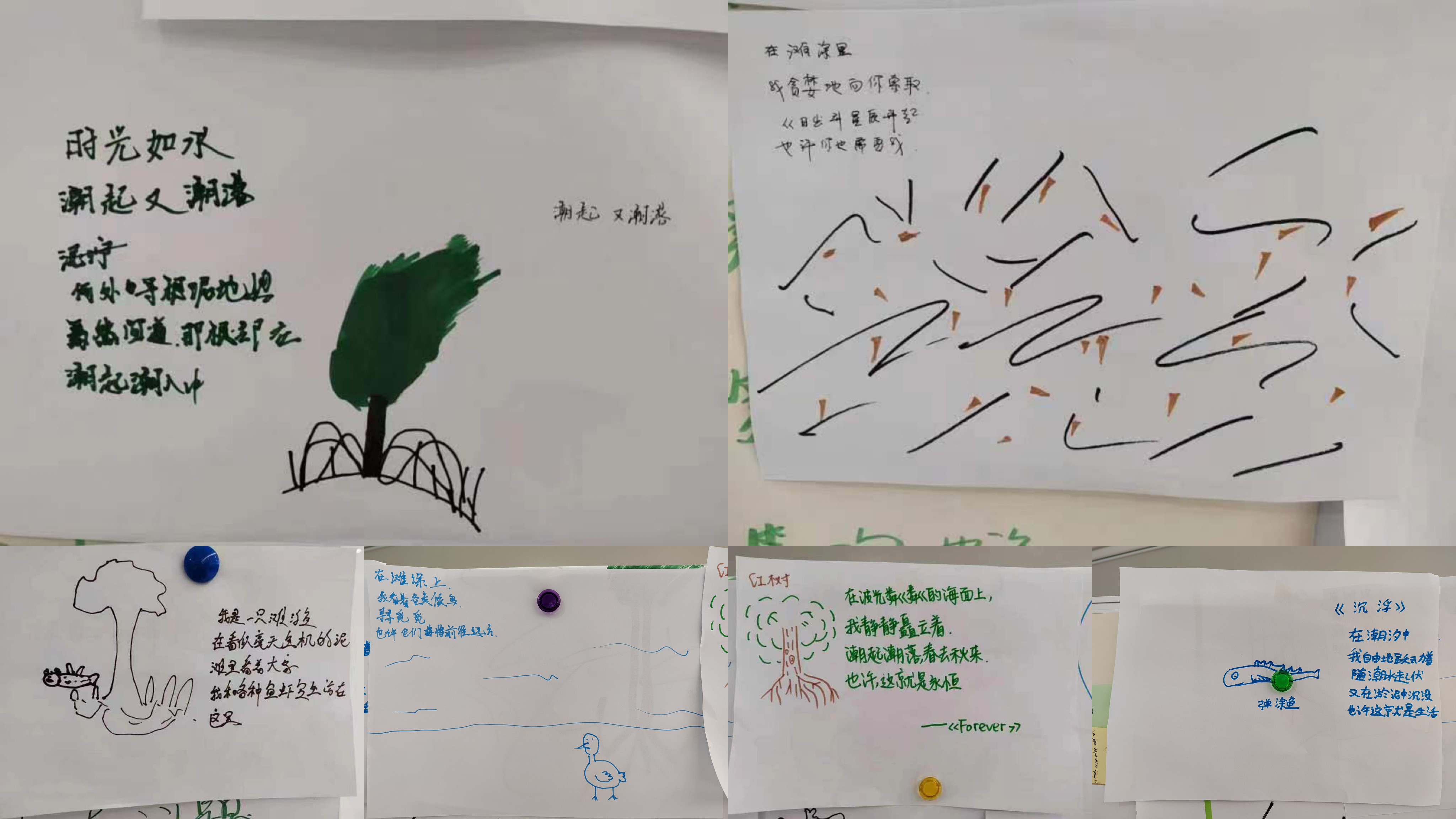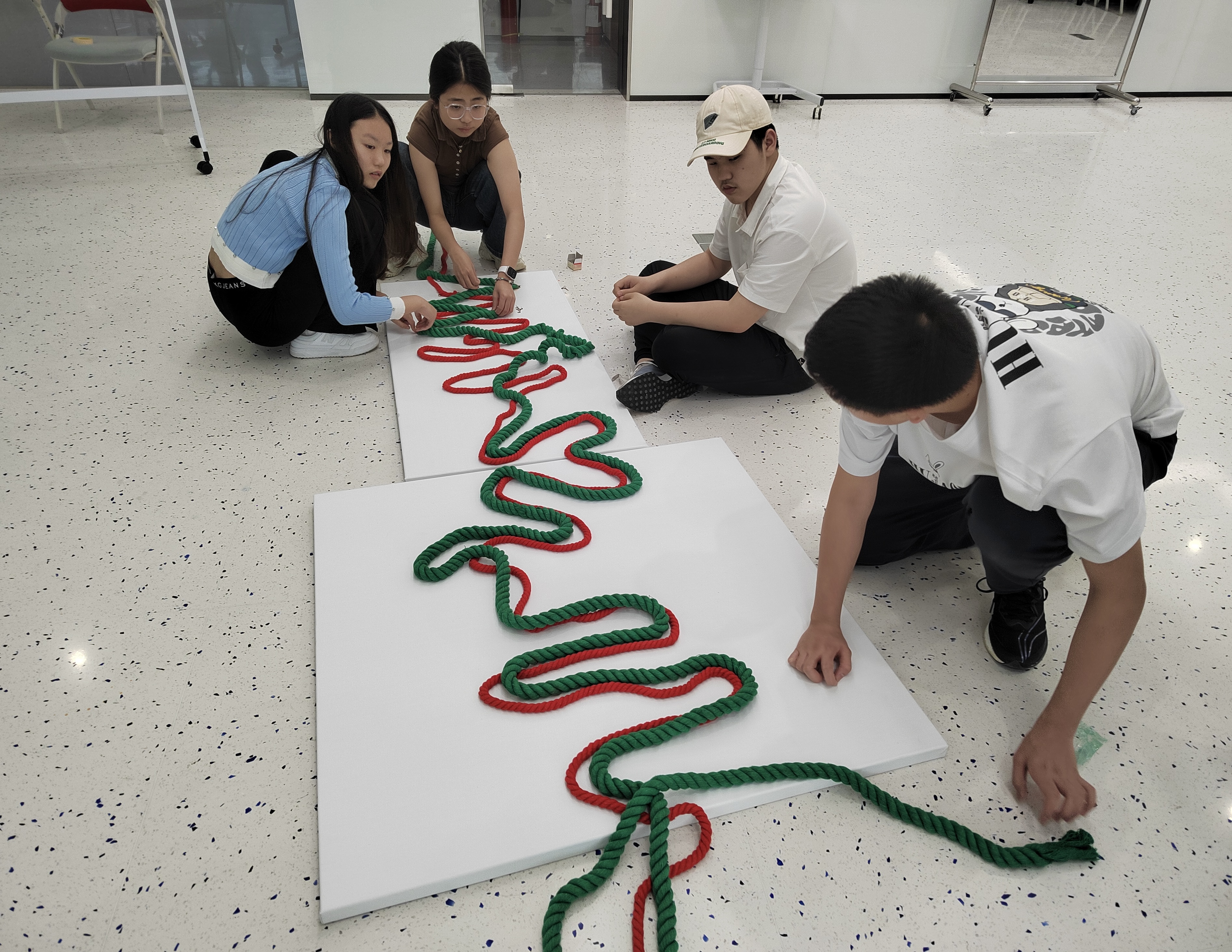Biodiversity, mangrove conservation and migratory birds have always been the focus of ecological protection in Shenzhen, and the pride of Shenzhen people. "As the city tree of Shenzhen, the mangrove is a cultural symbol of the spirit of Shenzhen.
In March 2023, young students from Shenzhen participated in the "Yuanxi Zhuoyu Project - Shenzhen Mangrove Public Welfare Environmental Protection Art Co-creation Activity", which is based on Shenzhen's business card "Mangrove and Migratory Birds" as the starting point to develop the "Mangrove and Migratory Birds" project. The activity is to take Shenzhen's business card "mangroves and migratory birds" as the starting point, to carry out research activities in Shenzhen mangrove forests, to explore the relationship between natural ecology and human society based on the practice of youth public welfare and natural art, and to show the power and style of young people for the ecological conservation of the mangrove forests in Shenzhen.

Tutor Tian Yang's sharing of public welfare practice with students
The members of the Shenzhen Mangrove Study Group came from schools such as SZNJ and SZWIS, and they took advantage of many weekends to participate in this public welfare research action. In the early stage of the field research, Tian Yang, a member of the organizing committee of UNESCO "Design for Peace", helped the team to establish the thinking framework of the field investigation through the case of coastal wetland protection practice in the Yellow Sea and Bohai Sea, and shared with the team members the cases of the development and protection of China's coastal wetlands in the past 10 years. In addition, Mr. Pan Qing'an, a civil environmental expert, shared with the team the development of China's environmental movement. He analyzed the action investigation cases of leading organizations in China, and from the perspective of fieldwork, he exchanged the multiple types of engagement paths for global urgent issues, leading the team to deconstruct the complex social system and build a framework for urgent issues by combining their own interests and characteristics.
After learning and mastering the basic knowledge of wetlands, the team started to visit the Science Museum of Futian Mangrove Ecological Park to learn on-site the ecological knowledge of coastal wetlands (mangrove forests) and identify the species and ecological characteristics of mangrove forests; then they inspected the ecological restoration area of the ecological park, and at the mouth of the Laohe River, the team observed birds such as the Little Egret, Pipistrelle Duck, Black-winged Long-footed Sandpiper, Antipodean Sandpiper, Black-waterthroat, and Red-footed Sandpiper. It was the first time for the team to observe birds, and the team was thrilled that the migratory birds were in the binoculars as if they were right in front of their eyes! Before nightfall, the team inspected the ecological environment of the Xinzhou estuary and learned about the ecological knowledge of estuarine wetland formation.
The second phase of the expedition focused on the mangrove habitats in the south and west of Shenzhen. The weather on that day was not ideal and the team members braved a light rain for the expedition. The first focus of the expedition was the Futian Mangrove National Nature Reserve, which is located on the north shore of Shenzhen Bay, the smallest mangrove reserve in China, and the only national nature reserve in China that is in the hinterland of a city with an internationally significant Shenzhen Bay wetland ecosystem. Here, nearly 100,000 long-distance migratory migratory birds overwinter and stop over every year, and it is an important "wintering place", "transit station" and "refueling station" on the migratory corridor of migratory birds from East Asia to Australasia. "The team was in the Futian Mangrove National Park.
The team braved the rain and walked through the mangrove jungle to experience the charm of the native mangrove forests. Tian Yang, the instructor, introduced the identification and ecological characteristics of the seven species of mangrove plants, namely, Autumn Eggplant, White Bone Loam, Tung Flowering Tree, Sea Lacquer, Leucaena leucocephala, and Mullein. The team went to a high viewing platform overlooking the birds skimming over the wetland in the breeze and looking out over the distant scenery of Shenzhen Bay and Hong Kong. On the bird-watching boat, through the glass of the cabin, the team was able to observe the daily routine of the life of the predatory birds from a close distance, and luckily, the team observed 8 black-faced spoonbills, the star species of Shenzhen. The Black-faced Spoonbill is classified as a globally endangered species, and due to the impact of human activities in recent years, resulting in habitat destruction and reduction, the global population is 6603 according to the global synchronized survey in 2023.
In the afternoon, the team members along the coastline inspection, they examined the Shenzhen Bay Park estuary, Talent Park Tidal Plaza reclamation habitat, followed by the Bao'an Airport is under construction reclamation project site, examining the site of the mangrove park in the western bay of Shenzhen and other places. This mangrove forest in western Shenzhen grows on both sides of the Guangzhou-Shenzhen riverine highway, most of which grows in the wetlands west of the highway, and there is also a narrow strip of mangrove forests between the highway to the east and Township Road 126. Due to the expanding reclamation area, the mangrove forests are gradually affected, and at the same time the birds will be involved. Through the comparison of different habitats, the team members very intuitively felt the ecological impact of the historical changes in Shenzhen.


Art co-creation by team members
At the end of the study tour, the team members conducted an art creation workshop under the leadership of art tutor Mr. Li Lingyun. The instructor used Design Thinking to interpret eco-art creation, and led the team in an outdoor scene at Shenzhen's Xiangmi Lake to stimulate feelings and reflections on the natural experience. During the brainstorming session, the four team members started to create an eco-artwork entitled "Resonance" on the theme of "Relationship between Mangrove Forests and Humanity", which presented mangrove forests as a complex and magical ecosystem that plays a vital role in human society, The two hearts rise and fall, expressing the relationship between the organisms in the mangrove ecosystem, the relationship between the organisms and the environmental factors, the relationship between the organisms and the mutual influence of this system on human society. The artwork shows the pursuit and desire of Shenzhen youth for ecological peace, and the artwork will also be submitted to the UNESCO Design for Peace Youth Action Initiative.

The team's artistic creations
Shenzhen is preparing for the "International Mangrove Center", which is crucial to the global protection and restoration of mangrove forests, scientific research and sustainable development. The "Shenzhen Mangrove Public Welfare and Environmental Protection Art Co-creation Activity" is an important practice for Shenzhen youth, starting from the concern of protecting mangrove forests, participating in the construction of Shenzhen, telling the story of Shenzhen, and through continuous learning and empowerment, they will eventually have the opportunity to play the role of the contemporary youth in the global environmental protection affairs.
No. 41, Beijing East Road, Xuanwu District, Nanjing
Nanjing China